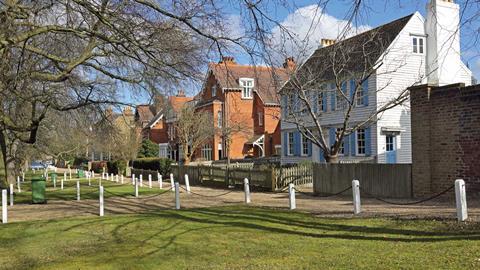Funny thing, the law. You would not, for instance, think you could get a ticket for parking on your own land. But you can. Who says? The Court of Appeal, for one. On 27 November 2009 in Dawood v Parking & Traffic Appeals Service & Another [2009] EWCA Civ 1411, in refusing permission to appeal against a penalty charge notice, Sedley LJ said that: ‘One might have thought that nobody could commit a criminal offence by parking a motor scooter on his own land. But the adjudicator took the law to be otherwise and HHJ Oliver‑Jones held that the contrary was not arguable.’ As did Sedley LJ.

But although the principle stands, following a recent decision of Fordham J in the Administrative Court, its application clearly depends on the factual circumstances. The case was R (Pereira) v Environment and Traffic Adjudicators [2020] EWHC 811 (Admin), judgment in which was given on 3 April 2020.
Dr Pereira (the claimant) and Dr Stephen Pereira (the Pereiras) live at 1 College Road, Dulwich Village, London, owning their house and the surrounding land. The house front-facing College Road has a strip of land between the house and a hedge which in this judgment the court divided into three: (i) the ‘hedge strip’, that is the area adjoining the hedge containing probably enough space to park three cars nose to tail; (ii) the ‘middle strip’ which would be left unobstructed by parking in the hedge strip; and (iii) the ‘chain link strip’, that is, that nearest College Road and adjoining a chain link fence. The Pereiras owned both the hedge strip and the middle strip. As the court noted: ‘It makes perfect sense for the Pereiras and their visitors to park in the hedge strip’, which ‘leaves the middle strip clear and unobstructed’. Therefore, ‘the most natural route to walk along the pavement is in the middle strip’.
However, Southwark Council issued a penalty charge notice relating to Dr Pereira’s car which had been parked along the hedge strip on 15 July 2018. On what basis? Section 15(1) of the Greater London Council (General Powers) Act 1974 provides that ‘any person who causes or permits any vehicle to be parked in Greater London with one or more wheels on or over any part of a road other than a carriageway, or on or over a footpath, shall be guilty of an offence’. By section 2 of the 1974 act ‘road’ has the same meaning as in the Road Traffic Regulation Act 1967 (now see the Road Traffic Regulation Act 1984) and includes ‘any length of road and any part of the width of a road’. Section 104(1) of the 1967 act defines ‘road’ as ‘any highway and any other road to which the public has access, and includes bridges over which a road passes’.
As Fordham J noted, the 1967 act definition of ‘road’ in section 104 has two limbs: the ‘highway limb’ (that is, ‘any highway’); and the ‘public access road limb’ (‘any other road to which the public has access’). It was for Southwark to prove, on the balance of probabilities, that the hedge strip fell within one or other of these two limbs. The traffic penalty tribunal adjudicator refused the claimant’s appeal and determined that Southwark had established the highway limb as an adopted public highway or in the alternative that Southwark had established the public access road limb. The review adjudicator upheld the penalty charge notice but on different grounds, namely that Southwark had not established the highway limb by showing the relevant land to be an adopted public highway but on the basis of deemed dedication under section 31 of the Highways Act 1980 (user as of right and without interruption for a full period of 20 years in the absence of evidence negating intention to dedicate). The review considered it unnecessary to determine the public access road limb.
However, Fordham J allowed the claimant’s judicial review application and refused to remit the highway and the public access road limbs for reconsideration. He said: ‘The review adjudicator’s determination upholding the highway limb cannot stand, because Southwark was not advancing such a claim, still less one which had marshalled evidence capable of supporting such a conclusion.’ As ‘Hilbery J put it in Merstham Manor Ltd v Coulsdon [1937] 2 KB 77 at 82: “he who asserts the right must establish as a matter of fact, on the one hand, the actual enjoyment of the right by the public as of right and, on the other hand, the actual suffering of the exercise of that right by the landowner for the full period of twenty years”’.
Moreover, the review adjudicator’s determination upholding the highway limb could not stand for the further and independent reason that the reasoning involved a material error of law. For ‘the all-important land was the hedge strip. The fact that pedestrians could always walk along the middle strip, whenever the hedge strip was blocked by a parked car – even if there was never a parked car in the middle strip – could support a conclusion that there was a “way” over the middle strip. But that was not good enough to support the parking ticket for the car parked on the hedge strip’.
The judicial review was therefore granted. The review adjudicator’s adverse conclusion on the section 31 issue could not stand, nor could he have found factual public access on his findings of fact and the evidence. He should have overturned the decision of the appeal adjudicator and allowed the appeal. In the circumstances, remittal was inappropriate and unnecessary.
Nicholas Dobson writes on local authority law and governance
































1 Reader's comment